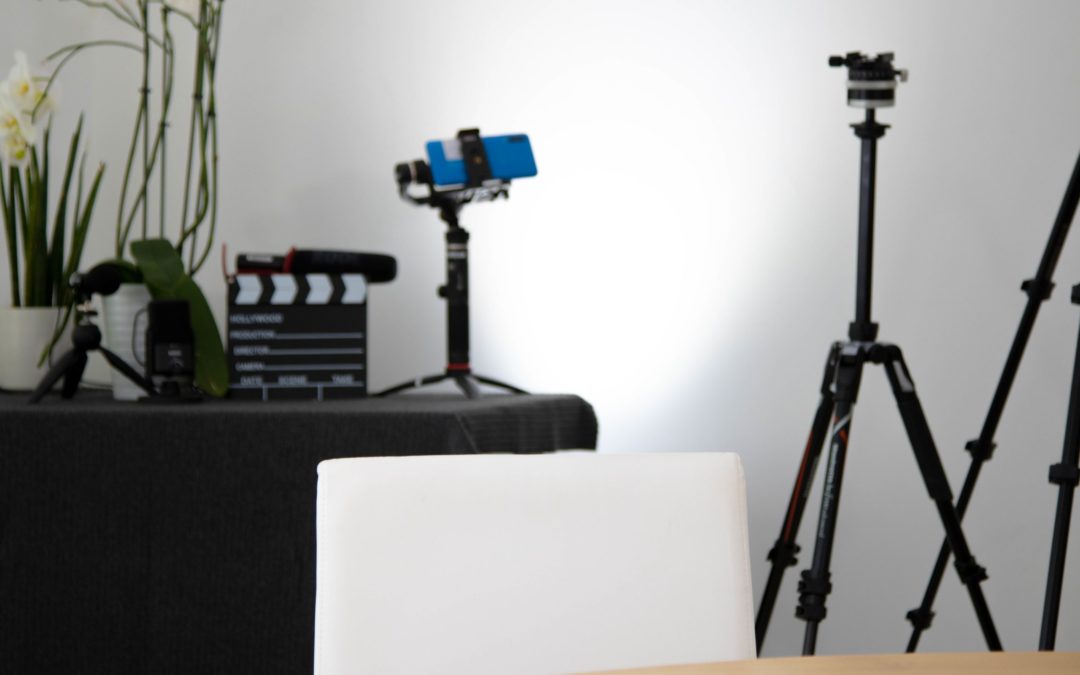The word “remote” took on a whole new meaning when this pandemic came here in March 2020.
Before this, I think it was mainly the word we used to refer to the gadget for the TV – as in “where’s the remote gone?” as we searched the sofa for the missing Apple TV Remote.
Now we’re all remote workers and managing both the advantages (hey no sitting in traffic!) to the frustrations (not being able to just ask a colleague sitting beside you something….), but here in our business we also had to learn how to adapt to remote training and remote video and audio production.
While Zoom and Teachable helped us adapt to remote training we were on a steep learning curve when it came to remote production of video and audio content.
Head-wrecking it was – particularly in the beginning!
Here are 5 ways we were able to produce content remotely in the 3 lockdowns we have experienced to date.
1. THE LAPTOP CAMERA IN VIDEO CALLS
I had to overcome my reluctance to use laptop camera footage as the video quality is not as good as I would like; most laptop cameras are 720p and can be even worse if the internet connection is poor. However it is the most efficient and easiest way to record video interviews with someone when you need it urgently. We’ve used Zoom mainly and we encourage interviewees to use their smartphones or tablets to join the call – the quality of the camera is much better there. As is a decent webcam – if you can get hold of one. We record back-up audio on these interviews with smartphones (see 4 below).
2. DIRECTED SMARTPHONE VIDEO RECORDING
For video productions we have trained people in how to make good quality video clips on their phones – make best use of natural daylight, use landscape video, and ensure the sound quality is good (soft furnishings do help). And of course get that eyeline right. Try not to WhatsApp unless absolutely necessary as it reduces the resolution – but again, needs must. I see TV News programmes using WhatsApp all the time to access content remotely.
3. SOCIALLY DISTANCED VIDEO RECORDING
We managed – admittedly during the Level 2 & 3 restrictions only – to record video outside with wireless microphones and extending microphones on long poles to ensure we were 2 metres away from our subjects. It worked fine over the summer; not as easy at present.
4. AUDIO RECORDINGS USING SMARTPHONES
We made several podcast recordings with a presenter and 2 or 3 guests using Zoom as the mode of communication; however we didn’t use the Zoom recording – instead we asked each participant to record themselves on their phones as well with headphones ensuring the Zoom audio was not picked up. Took a bit of time and advance preparation to ensure everyone knew what they were doing, and that they remembered to press REC on their phones on time. But the quality of the audio on a smartphone is soooo much better than Zoom that it was well worth it. Audio tracks can be sync’d in the edit.
5. AUDIO RECORDINGS USING CLEANFEED
Thanks to journalist Lorna Siggins for introducing me to Cleanfeed back in the spring. This is a Chrome-only system using email and laptop microphones to record a higher quality audio feed with several participants at a time. As well as better quality, the recordings are easier to edit and in a podcast with several voices, people can talk over each other so makes the discussions more lively. Even better if the participants – particularly the presenter – have a decent USB microphone. We recommend the Rode NT-USB mini microphone or similar.
While the pandemic is going to end this year, I think we will all continue to use the tools and techniques we have learnt these past 10 months or so to enable us to bring lots of fresh faces and voices to our productions. The huge advantage they offer include efficiency and ease of access – particularly for international experts.
So good luck with the production and here’s to lots more in 2021!

